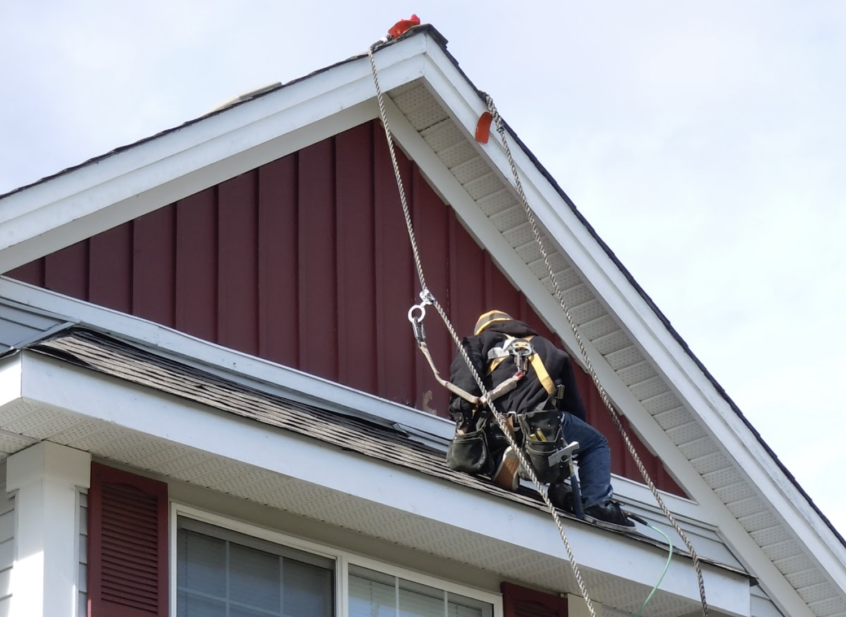Fall prevention is an incredibly important aspect of roofing. Every year, there are 40,000 fall-related accidents in Canada, and at least 30% of fatal injuries on a construction job site are attributed to falls. And while it may seem that all of these falls happened from great heights, unfortunately, people have died falling from heights as low as three meters.
Since height safety is so important, what steps can be made to help prevent injuries and fatalities on the job site? Below is a quick and handy list of steps to take to help prevent falls on your next roof job.
Take Time to Talk (About Safety)
The first step to making sure that people stay safe on a roofing job site is to give employees proper training before they climb on top of a roof.
Training doesn’t have to be a once-in-a-career measure, either. Many times, daily safety reminders are important, both for new employees and seasoned ones. The small amount of annoyance that may come from a safety reminder before a job is far better than an accident.
Safety Methods
There are a lot of fall prevention methods and equipment that can be used to keep workers safe on rooftops.
Anchors
Anchors can be temporary or permanent and are intended to be secure points for workers to tie into. Permanent anchors must be approved by an engineer before use. It’s important to make sure that anchors are installed correctly to ensure they have enough strength in case of a fall and workers aren’t tying into things that aren’t approved safety anchors that could break easily—like chimneys, roof vents, or TV antennas. Temporary anchors should always be secured as per the manufacturer’s specifications.
Guardrails
Temporary guardrails are the best form of fall prevention. There are different types that can be installed around the perimeter of a roof to help ensure height safety.
Personal Fall Protection System
Personal Fall Protection Systems involve a worker using a harness, lifeline with a lanyard to secure themselves to an anchoring point. It is always best to stay in fall restraint versus fall arrest to limit any possibility of a trip, fall through an opening, or slip off the edge.
Recognizing Hazards
It’s important for fall prevention to recognize things that could increase the likelihood of an accident. Before climbing on a roof, consider some common hazards that might cause an accident if not managed carefully.
Ladders
Ladders can be deceptively dangerous because many people believe that they do not need to use tie-offs or other safety methods until they are on top of a roof. This is not the case, as there are thousands of ladder-related accidents every year.
Below are some things that should be taken into consideration when working with ladders.
- Inspect ladders: Make sure that ladders are fully intact before stepping on them. Check for the maximum weight capacity of the ladder. It’s also important to make sure that the gravity locks are working properly, and that extension ladders operate smoothly.
- Tie-Off: Roofers who are reaching heights higher than three meters on a ladder should use a safety harness to prevent falls. Ladders should also be braced at the bottom and tied off at the top.
- Protective Footwear: Even with slip-resistant ladders, it’s a good idea to use footwear that provides extra grip with slip-resistant tread. This is especially important during inclement weather when the ladder may become slipperier than normal.
- Don’t Stand on the Second-to-Top Step: While most people know it’s unsafe to stand on top of a ladder, it’s also unsafe to stand on the next-to-top step. Standing near the very top of a ladder increases downward pressure on the ladder’s hinges, making it much more likely to kick-out. It also puts your centre of gravity above where there’s any chance of bracing yourself against the ladder if you start to lose your balance.
- Carrying Items: It’s very important when ascending or descending a ladder to have three points of contact on the ladder. A common cause of accidents for people on ladders is trying to carry objects up or down.
Poor Weather Conditions
Weather conditions such as wind, ice, snow, and rain will make a roofing project less safe. Rain, snow, and ice can cause a roof to become slippery, and heavy snows can add extra weight to potentially unstable roofs. It may be necessary to postpone work until the weather conditions have improved.
Edge Awareness
In any roofing project, it’s important to remind yourself where the edge of the roof is. While this may seem like an obvious thing when workers become focused on their job, they may pay less attention to how close they are to the edge of a roof.
Inspect Equipment
Before heading up to a rooftop job site, it’s important to ensure your safety equipment is in good shape. Makes sure that straps and hardware are in good working condition, free from frayed, tears, cuts, or burns.
Safety Going Forward
While it may not be possible to prevent 100% of job-related accidents, there are fairly simple procedures that can be put in place to help prevent them. With proper training and equipment, the job site will be a much safer atmosphere for workers.


